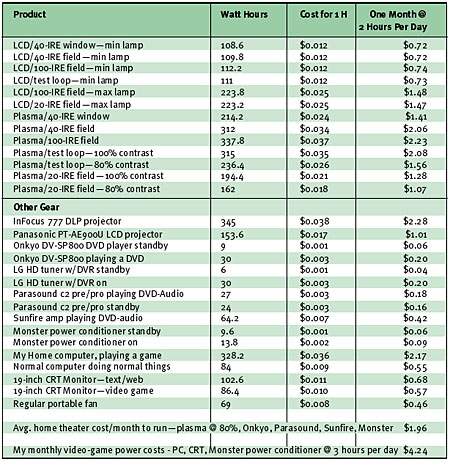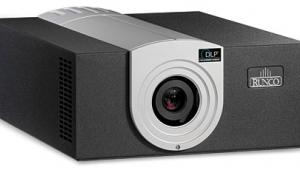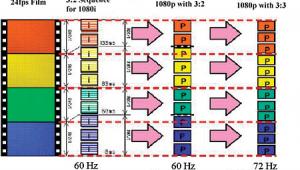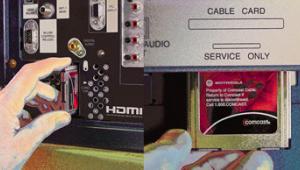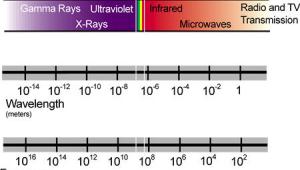Power!
You know those little plastic plug thingies you put in electrical outlets so that kids don't stick their fingers and such into them? Turns out, they're there for a reason. My parents dutifully put these in all the outlets in our house, and, when I was just past the age where they figured I couldn't possibly be stupid enough to stick anything into an outlet, I found an innocent little piece of copper wire. At this point, you can see where this story is headed. Lacking any polyvinyl chloride polymer to impede my process, and always having an inquisitive mind, I inserted said wire into said outlet. The results were predictable. I believe vaporization was involved. Since then, I've had a healthy (ahem) respect for electricity.

In the United States, I'm in the minority. Americans don't, as a group, care or even think about electricity. In Europe and Asia, power consumption is a major selling point for different products. Here, it barely makes a line item on a spec sheet. So, before you Hummer drivers e-mail in that we shouldn't care and that I can shove my liberal pinko agenda, please let me finish. I also don't want you hippies leaving your drum circles and "tobacco" pipes to decry me for mocking the plight of the rain forests. Let me stop you all right there. I'm going to put this in a perspective that we can all understand: money. Home theaters cost money to run, and it's not something most of us really think about. Want some extra money each month? Read on.
The Gear
There are a few clever gadgets on the market that can tell you how much a product costs to run each month. P3's Kill A Watt is one; the Watts Up? is another. We purchased the latter to run a couple of tests. One test was to finally put the argument of LCD versus plasma power consumption to rest. The other involved putting a bunch of products on the meter to see how much power they consume, not only when they're on, but also when they're off. Many products drain electricity even when they're off, which isn't something most people think about.
How?
We ran each product in its normal duty cycle. In other words, we measured it while it was doing what it was designed to do. For the plasma and LCD, we expanded this. We measured each display with a 20-IRE full-screen signal (approximately what average video is), a 40-IRE window and field, an actual video test loop (off Video Essentials), and a 100-IRE full-screen signal. Lastly, I calculated the cost to run each month based on $0.11 per kilowatt-hour, because that's what it is where I live, and I don't know where you live. If you use 1,000 watts in an hour, that's 1 kilowatt-hour. OK, on to it.
Plasma vs. LCD
I lied. Before we get on to it, perhaps a little explanation is in order. LCDs have a backlight that is always on. So, for the most part, the highest power-drain portion of the display is constant (the power required to modulate the liquid crystal is infinitesimal in comparison). Plasmas, on the other hand, change a gas to a plasma to create light. If you want more light, you do this more often. So it's normal for plasmas to require more energy on video with a higher APL (average picture level). At least that's the theory. For this test, we used the 40-inch Sony KDL-V40XBR1 LCD reviewed in this very issue (page 82) and the 42-inch Panasonic TH-42PX500U plasma from last month. Yes, I know that they're not exactly the same size, but the screen-area difference is about 10 percent, so we can keep that in mind when we're looking at the numbers. The Sony, like many of the new LCDs, has an adjustable backlight. As you would have guessed, it requires a lot less power in the low backlight mode. But we'll get to that.
The Other Gear
Also in your system, you have a DVD player, as well as possibly a pre/pro and an amp, an HD tuner with a hard drive, an HTPC, and so on. Each of these is listed in the chart on page 34. The amp power requirement, as you can imagine, will vary greatly depending on the amp, the speakers, and what you're playing through it. I included this one just as an example. As you can see, several of the products take power when they're off, as well. Expect the equipment in your system to do this, too.
Decoding the Numbers
At first glance, the LCD seems to blow the plasma away, but that's at first glance. As expected, no matter what the signal, the LCD's power consumption stayed right around 110 watts—at least in the low lamp setting. In the high lamp setting (out of the box), it's about 223 watts all the time. The plasma varies greatly depending on the signal; 20 IRE is about the average for broadcast TV. Out of the box, the plasma is slightly better than the LCD, at 194 watts. Drop the contrast to 80 percent of its maximum (where you'd expect a calibrated set to be, more or less), and now you're down to 162 watts. That's a savings of $0.40 each month (calculated based on two hours per day of use) over the full-lamp LCD! OK, now I'm beginning to see why people don't care. Then again, most people watch more than two hours of TV a day, so crank that up to the average of six hours a day (sad, but true), and now you're looking at a savings of $1.20 each month. Of course, the LCD will still be a lot brighter. The test loop, which is fairly bright throughout, shows that the plasma is the power fiend, needing 236 watts, even at 80 percent brightness. If you're really into it, you can take the 10 percent screen size difference into account and see even closer numbers.
What this tells us is that, if you watch a lot of movies, the plasma will generally cost you less each month. If you watch a lot of cartoons and sports, the LCD, even on full brightness, will cost you less.
The Other Gear
The calculations for the other gear are pretty self-explanatory. Of special note is what the products take from the wall when turned off. Is it a lot? Not usually (except for the pre/pro). But add up a bunch of "not a lot," and that could be a few dollars each month you could shave off your electric bill. Lastly, I included calculations for my home gaming machine, only because it surprised even me. Not including the speakers I have hooked up to it (six, with two subs), it costs me almost $4.25 a month to run. And that's not even operating as my home theater.
What Does It All Mean?
Well, if you care about this kind of thing or want to shave some pennies off your electric bill, it could warrant purchasing one of these power-measurement devices (between $50 and $80). Otherwise, it's an interesting study in marketing spin from the plasma and LCD companies. Both teams could be right, and, of course, both could be wrong. I love that.
